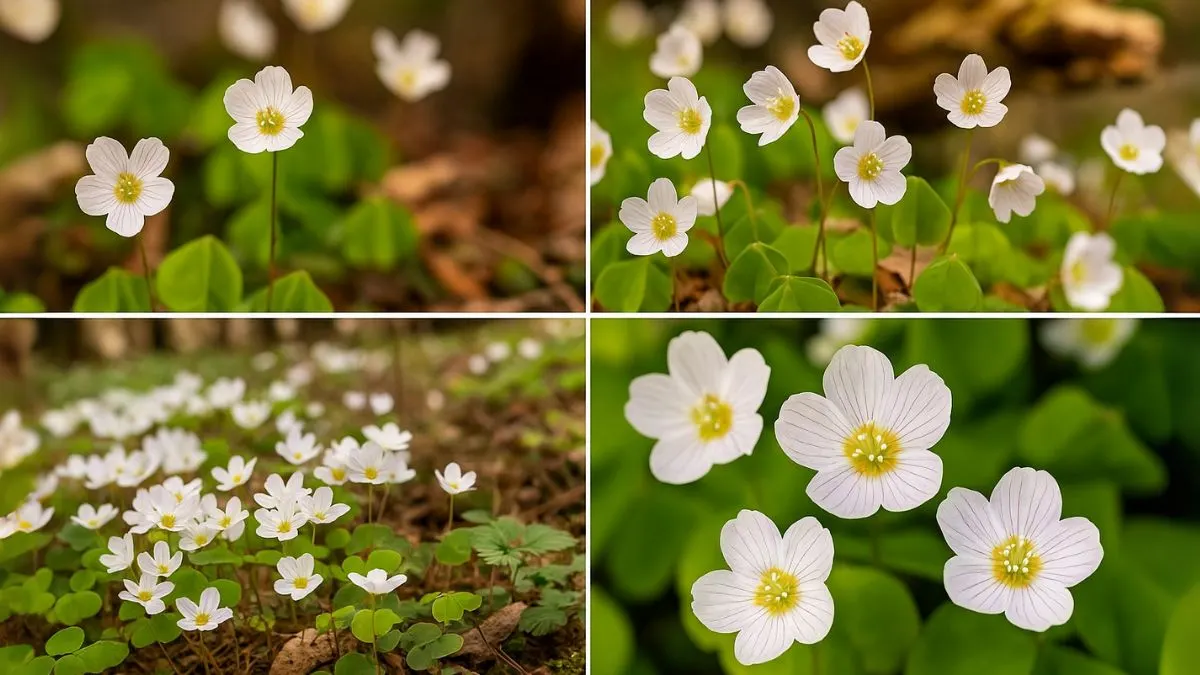Among the countless plants found in forests and gardens, Wood Sorrel stands out with its delicate clover-like leaves and dainty white or pink flowers. Often called Fairy Bells, this little plant carries a reputation far greater than its size.
I first discovered it during a woodland hike in Canada. Growing in shaded, mossy patches, it was refreshingly tangy when chewed raw—reminding me why it’s long been valued for both culinary and medicinal purposes.
Nutritional Value of Wood Sorrel

One of the plant’s greatest strengths is its nutritional content.
- Wood Sorrel is rich in vitamin C and surprisingly, it contains a high amount of vitamin C compared to other wild edibles.
- This makes it a natural remedy against scurvy in ancient times.
- Even today, foragers enjoy adding its leaves to salads and teas for a citrusy boost.
It’s an easy, free, and natural way to support immunity and refresh the body.
Medicinal Uses
Beyond nutrition, Wood Sorrel has been used in traditional medicine for centuries.
- Wood Sorrel is more effectual than the true Sorrels as a blood cleanser, making it popular in detoxifying herbal remedies.
- It has cooling properties, helping to reduce fevers and inflammation.
- Most interestingly, it is known for quenching thirst, which explains why hikers and forest wanderers often chew the leaves for refreshment.
In my own experience, sipping Wood Sorrel tea after a long trek was as revitalizing as any energy drink.
Also Read: 6 Stunning Exotic Flowering Houseplants for a Tropical Vibe
Availability: A Plant for All Seasons
Unlike many seasonal herbs, Wood Sorrel can be found almost all year round.
- In mild climates, it appears fresh even during winter.
- Its resilience makes it a dependable wild green for foragers.
- Because of this, many survivalists consider it a key plant for emergency nutrition.
Cultural and Ecological Importance
Wood Sorrel is not just a useful herb—it’s also an ecological marker.
- Wood-sorrel is used as an indicator of ancient woodlands, meaning its presence can suggest that a forest has existed undisturbed for centuries.
- In folklore, its dainty flowers and leaves are linked with fairies, hence the nickname Fairy Bells.
- Ecologists and historians alike see it as both a plant of heritage and natural beauty.
Growing Wood Sorrel at Home
If you’re enchanted by its benefits, you can cultivate Wood Sorrel easily.
- Choose a shady spot with moist, well-draining soil.
- It grows well in containers or directly in garden beds.
- Keep it watered, but avoid waterlogging.
Because of its spreading habit, it makes a beautiful ground cover for shady gardens in the USA, Canada, and beyond.
Also Read: The Gardening Trick with Dandelion Tea That Actually Works
Quick Benefits of Wood Sorrel
Benefit |
Detail |
Nutrition |
Contains a high amount of vitamin C, immune boosting |
Medicinal |
More effectual than the true Sorrels as a blood cleanser |
Practical |
Known for quenching thirst on hikes |
Ecological |
Used as an indicator of ancient woodlands |
Availability |
Wood Sorrel can be found almost all year round |
Global Popularity
- In Canada, it’s cherished by foragers during spring and summer hikes.
- In the USA, chefs experiment with its tangy leaves in gourmet dishes.
- Globally, it is valued in folk medicine, often brewed as a refreshing tea.
This wide appeal ensures Wood Sorrel remains a plant of both tradition and modern innovation.
Personal Experience: My First Taste of Wood Sorrel
On my first woodland walk where I encountered Wood Sorrel, I remember being surprised at its tangy flavor. It was sour like lemon but refreshing, especially after hours of hiking. That’s when I realized why travelers say it is known for quenching thirst. Since then, I’ve tried incorporating it into salads and herbal infusions, finding new ways to appreciate this tiny but powerful plant.
Also Read: Malabar Spinach: The Perennial Green You Need in Your Garden
Why Wood Sorrel Deserves Recognition
To summarize:
- Wood Sorrel is rich in vitamin C and contains a high amount of vitamin C.
- It has medicinal benefits and is more effectual than the true Sorrels as a blood cleanser.
- It is refreshing and known for quenching thirst.
- Wood Sorrel can be found almost all year round, making it a reliable green.
- Ecologically, Wood-sorrel is used as an indicator of ancient woodlands.
👉 Whether you’re a forager, gardener, or simply curious, the humble Fairy Bells plant is worth your attention. Its blend of nutrition, folklore, and resilience makes it one of nature’s best-kept secrets.






